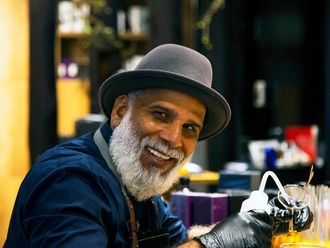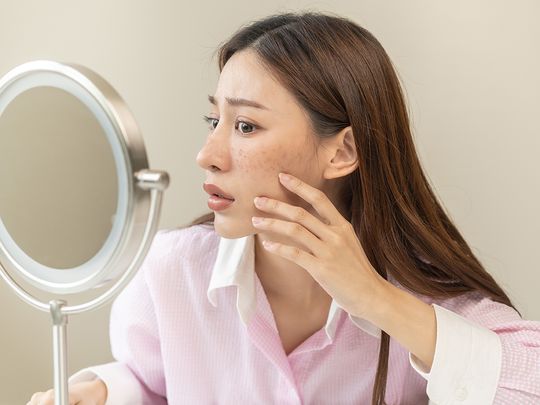
We get it. It’s stressful to get a pimple just before a grand occasion. Ask me, I have one that resurfaces on the same spot on my cheek, every couple of months. Once, right before a wedding.
As harrowing it is, don’t try popping it. Don’t put toothpaste either for a quick fix. You just end up with spots that don’t leave your face for a long time. Again, like yours truly.
Prodding pimples are just one of the many skincare errors we make. There’s a list; but we’re here to help you out.
So, let’s go through the common skincare errors that most of us make.
Don’t pop that pimple. Don’t use toothpaste
As terrible as it feels, don’t keep prodding it. Kinga Szymanska, a Dubai-based laser and skin cosmetologist, says, “It can be tempting to squeeze or pick at blemishes, but this can lead to inflammation, scarring, and even infections. It's important to resist the urge to pop zits and instead focus on a proper skincare routine."
"As well as delaying the natural healing process, this can actually make the pimple more inflamed and noticeable," says Fariha Anwar, aesthetic doctor from Euromed Clinic, Dubai.
Don’t try toothpaste either as a “quick fix”, as it can dry out the skin or lead to dark spots. People use toothpaste as it has cooling agents and menthol, which help with redness and inflammation. However, it’s only temporary, and can lead to more problems.
“Choose gentle spot treatments with ingredients like salicylic acid and consider consulting a dermatologist for persistent acne concerns. I also suggest investing in pimple patches, which can help minimise inflammation,” explains Sonia Cheibi, a clinical director at Skin Laundry, a Dubai-based clinic.
Forgetting sunscreen?
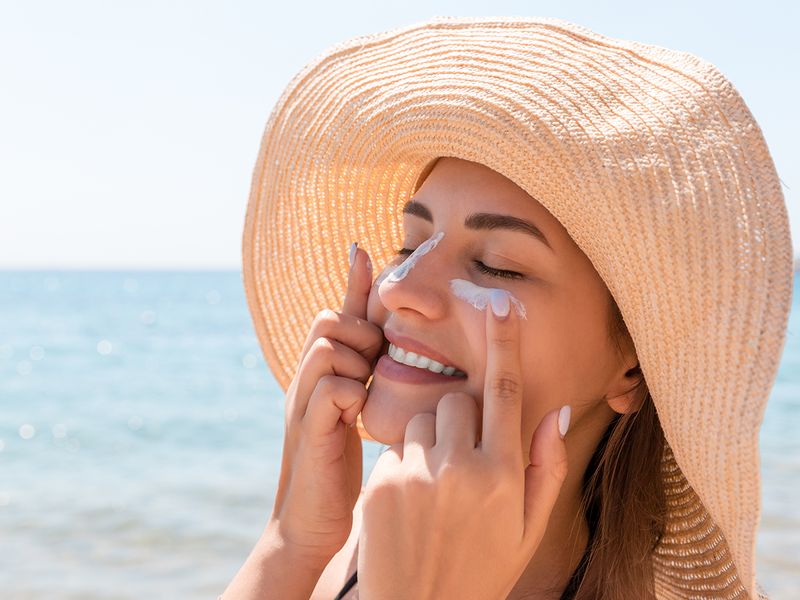
When you don’t use the right amount of sunscreen, it can lead to multiple problems. People tend to apply it only during the summer season, or if the sun is fierce. Big mistake: Unprotected exposure to the sun results in hyperpigmentation, early signs of ageing and more breakouts.
"Skin cell damage not only increases the risk of developing skin cancer, but also accelerates wear and tear on your skin, such as wrinkles and sagging," says Anwar. Around 90 percent of skin changes often associated with aging are caused by the sun's rays, she adds.

Unprotected sun exposure is very damaging for your skin. Skin cell damage not only increases your risk of developing skin cancer but also accelerates wear and tear on your skin, such as wrinkles and sagging...
"For this reason, you must use a broad-spectrum sunscreen with both UVA protection and Sun Protection Factor of 30 or higher," she says. SPF or Sun Protection Factor is a measure of how much the sunscreen will protect the skin from UVB rays.
However, people also make the mistake of going overboard, as Szymanska explains. “Using excessively high SPF numbers may not provide significant additional benefits. SPF 30 is generally sufficient for everyday use, as it blocks around 97 per cent of UVB rays,” she says. UVB, or Ultra-Violet B rays, which is a type of ray present, in sunlight, play a role in causing skin cancer and sunburn. According to the American University of Iowa Hospitals and Clinics site, UVB rays cause melanoma, which is a form of skin cancer.

Reapplication of sunscreen is necessary every two hours, especially if you are sweating or spending extended periods in the sun. Look for a broad-spectrum sunscreen with an SPF (Sun protection factor) of at least 30 to ensure you are adequately protected...
SPF with higher numbers can contain more chemical ingredients and feel heavier on the skin. This could lead to clogged pores, she says. “Additionally, reapplication is necessary every two hours, especially if you are sweating or spending extended periods in the sun. Look for a broad-spectrum sunscreen with an SPF of at least 30 to ensure you are adequately protected,” says Szymanska.
Calm down with the actives
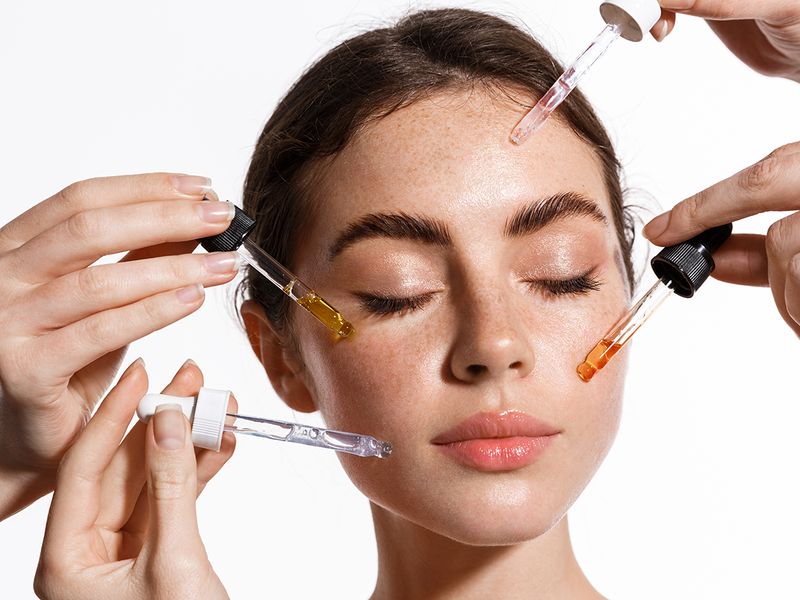
As intrigued as you might be about choosing actives, don’t go all out with the application, as Zaheer Abbas, an aesthetic dermatologist at Skin111 Medical Aesthetic Clinic Dubai, says.
We all want that glowing, glamorous skin, but in our rush to attain it, we could be damaging our skin barrier. Actives or active ingredients in skincare as they are called, are designed to target a specific skin concern, whether that be acne or aging, explain the experts. You need to be careful when looking for the right actives in skincare, as they address specific skincare concerns. Some of the prominent actives that are commonly used are antioxidants like Vitamin A, Vitamin C and Vitamin E. Probiotics, Alpha-Hydroxy Acid (AHA), and Hyaluronic Acid.
The excessive use of actives is a common mistake, say the experts. “Actives such as retinol, AHAs (alpha hydroxyl-acids) and BHAs (beta hydroxyl-acids) can provide significant benefits to the skin but overusing them or combining them incorrectly can lead to irritation, dryness, and sensitivity,” explains Szymanska.
According to UK-based Medical News, AHA acids are commonly found in foods, like milk and sugarcane. Many of them are used in skincare treatments as they loosen the top layer of skin cells, which encourages the skin to grow more cells, increasing cell turnover. These are present in serums, toners, face pads and moisturisers.
On the other hand, BHA’s are milder acids that are found in plants, tree bark and fruit. The most common BHA is salicylic acid, which goes deep into your skin and clears out clogged pores, removes dirt and sebum.
Gradually introduce the actives into your skincare routine and follow the recommended usage guidelines. “Start with a lower concentration and frequency, then gradually increase as your skin tolerates it. Avoid combining multiple actives at once, especially if you have sensitive skin. Patch testing new products and listening to your skin's feedback is crucial,” she says.
Excessive actives affect your skin barrier, which acts as a protective shield. It becomes compromised, says Cheibi. The barrier function becomes impaired as too much water evaporates from the skin, which causes reduced water content in the stratum corneum, which is the barrier between the layers of the skin. This layer prevents toxins and bacteria from entering the body. As a result, your skin will be more vulnerable to external irritants, such as dust and heat. Use just one active in your routine if you can and incorporate an AHA or BHA twice a week, and slowly build on it.
Moreover, know what you are using. "People get lost in using too many products, moisturisers, exfoliators. Use less products, and something that is suited for your skin," says Abbas. You also need to know the order of the products and understand what exactly your skin can manage. People tend to use the wrong moisturisers for dry skin, which results in breakouts. Start with cleansers, exfoliators, toners, serums, moisturiser and then sunscreen.
Lemon juice for your skin?
It’s a common belief: Lemon juice and other citrus fruits can brighten your skin. However, it has damaging elements that can cause redness and irritation.

People get lost in using too many products, moisturisers, exfoliators. Use less products, and something that is suited for your skin...
Lemon juice contains compounds such as furocoumarin, limonene, citral or citronellal, which are known allergens and sensitisers. Moreover, lemon juice has acid properties that can affect your skin, according to Vogue India. Worse, it can cause a skin reaction called phytophotodermatitis when it is applied after sun exposure, which leads to burns and discolouring of the skin.
How to use retinol correctly?
Retinol is a derivative of vitamin A and stimulates collagen production, reduces wrinkles, and improves skin texture. It sounds like a charm, but it has some rules. Don’t mix it up with other creams, advises Szymanska. “It can be unstable and may not work effectively, when combined with other products. It's best to use retinol on its own or as directed by the product instructions. If you want to incorporate other creams or serums into your routine, use them in separate steps, allowing each product to be fully absorbed before applying the next,” she says.
Moreover, never apply it on damp skin. On damp skin, retinol gets absorbed more deeply and intensely, leading to irritation and possible breakouts.
Beware of how you use your retinol. Retinol can be mixed with hyaluronic acid and ceramides as well as sunscreen. However, don’t mix it with Vitamin C, benzol peroxide or any of the AHA and BHA acids. In the case of the AHA and BHA acids, they are exfoliating ingredients that can cause further problems, if your routine already includes retinol.
Be consistent; don’t forget your routine even when you’re on holiday
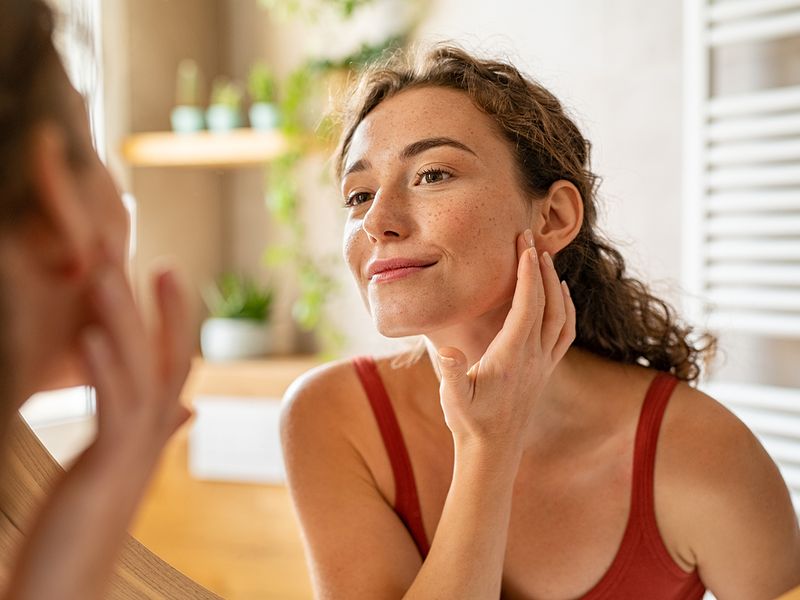
Consistency is key when it comes to skincare, says Szymanska. “Cleanse your skin morning and evening, follow up with appropriate treatments and moisturizers, and always wear sunscreen during the day. Consistency allows your skin to adapt to the products and ingredients, leading to better overall skin health and visible progress over time,” she says.
Moreover, make sure you do it even when you are on vacation. Always make sure that you have the basics with you, including cleanser, moisturiser, and hydrating products.




